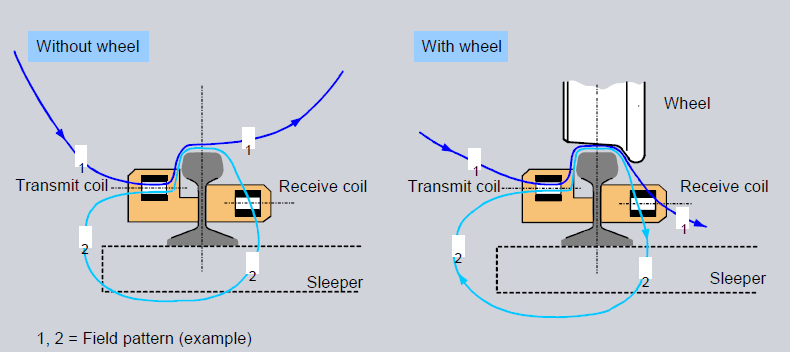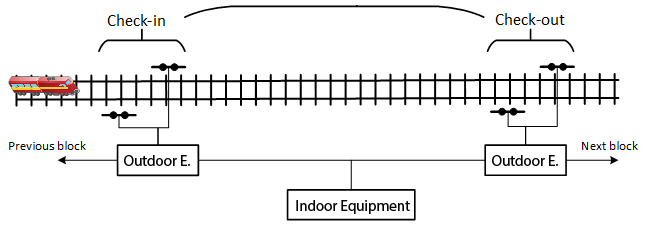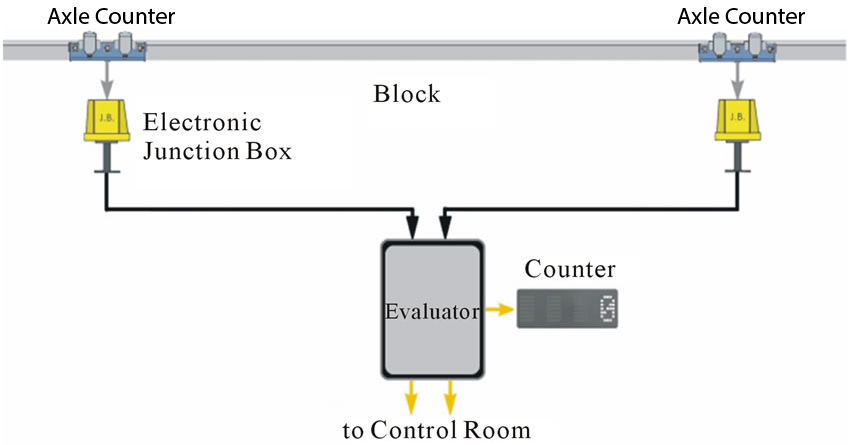Axle Counter
An axle counter is a device on a railway that detects the passing of a train between two points on a track. A counting head (or detection point) is installed at each end of the section, and as each train axle passes the counting head at the start of the section, a counter increments. A detection point comprises two independent sensors, therefore the device can detect the direction and speed of a train by the order and time in which the sensors are passed. As the train passes a similar counting head at the end of the section, the counter compares count at the end of the section with that recorded at the beginning. If the two counts are the same, the section is presumed to be clear for a second train.

This is carried out by safety critical computers called ‘evaluators’ which are centrally located, with the detection points located at the required sites in the field. The detection points are either connected to the evaluator via dedicated copper cable or via a telecommunications transmission system. This allows the detection points to be located significant distances from the evaluator. This is useful when using centralised interlocking equipment but less so when signalling equipment is distributed at the lineside in equipment cabinets.

Components of the system
The main components of the system are:
- Outdoor equipment (detection points in the track area)
- Information transmission equipment (cables)
- Indoor equipment (evaluation, indication & resetting)

Advantages
The advantages of Axle counter that-
- It does not require wooden sleepers (where concrete sleepers are not available) except for short track circuits to suppress the counts due to movement of insulated trolleys.
- An axle counter system can cover a very long section up to 15 Kms.
- It does not get affected either by flooding of track or poor maintenance of tracks unlike the track circuit, which is highly susceptible to these conditions.
- It does not require insulating rail joints, thus, rails can be continuously welded. This reduces track maintenance cost, low wear and tear of tracks and vehicles and to increase traveling comfort.
- Efficiency and safe working of axle counters does not depend up various track parameters and climate condition such as length, ballast condition, drainage, stray voltage and currents, track feed voltage and lead cables, etc. like track circuits.
Disadvantages
- The quality of the electrical signal transmitted by the rail is dependent on the insulation resistance of the ties and the ballast. Causes leakage currents (if insufficient).
- This resistance is a limiting factor for the maximum length of the track circuit.
Applications
Axle counters have been finding more and more uses on modern safety signaling systems in railways. These are being used presently for the following.
- Monitoring of berthing tracks in station areas and yards.
- Monitoring of point zones in station areas and yard.
- Automatic Signaling systems.
- Block working through axle counters using multiplexers (USBI) with cable, OFC or radio communication (Last Vehicle Checking Device /Axle Counter Block Working/Block Proving by Axle Counter).
- Level-crossing warning system using axle counter. (f) Intermediate Block Signaling in Double line sections.
Sources: fersil-railway.com; wikipedia.com; Central Electronics Limited-Universal
Videos:
